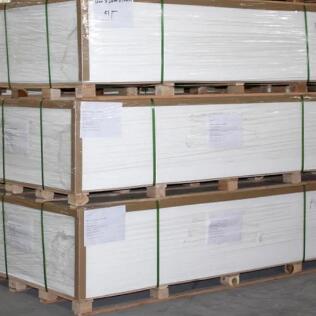Innovative Uses of Low-Density PVC-Free Foam Boards in Modern Industries
2024-09-07
Low-density PVC-free foam boards are gaining attention as a lightweight, durable, and environmentally friendly material that can be used in diverse industries. With their impressive strength-to-weight ratio, flexibility, and easy workability, these boards have become a valuable asset in modern industrial applications. In this blog, we will explore some innovative and lesser-known uses of low-density PVC-free foam boards, shedding light on how various industries are leveraging this material for creative and practical solutions.
The Rise of PVC-Free Materials: A Shift in Industry Standards
The global trend toward sustainability has fueled the rise of PVC-free materials. Foam boards made from alternative plastics, such as polypropylene or polyethylene, have quickly gained traction in industries that were once dominated by PVC-based products. The advantages of using PVC-free materials include their environmental friendliness, recyclability, and non-toxicity, which make them appealing to businesses seeking to reduce their carbon footprint.
Innovative Uses of Low-Density PVC-Free Foam Boards
1. 3D Printing and Prototyping
The 3D printing industry has found unique applications for PVC-free foam boards, especially in the creation of prototypes and mock-ups. The material’s lightweight nature and ease of cutting make it perfect for building architectural models, product prototypes, and intricate designs. Designers can use foam boards as structural bases for printed components or create large-scale mock-ups quickly and affordably.
2. Automotive Industry
Low-density PVC-free foam boards have recently been adopted by the automotive industry for use in vehicle interiors and lightweight structural components. The foam boards help reduce the overall weight of vehicles, which improves fuel efficiency and lowers emissions. Additionally, their resistance to moisture and chemicals makes them ideal for interior panels, headliners, and door trims.
3. Aerospace and Aviation
In the aerospace and aviation industries, the need for lightweight yet durable materials is paramount. PVC-free foam boards have found a niche as insulation and support materials in aircraft components. Their lightweight properties help reduce fuel consumption while ensuring that important components remain durable in extreme temperature fluctuations and atmospheric pressures.
4. Furniture and Cabinet Making
PVC-free foam boards are being used in the manufacture of furniture and cabinets due to their light weight and ability to be shaped and laminated. For modular furniture and temporary installations, these boards offer a cost-effective alternative to wood or MDF while providing a smooth, durable surface that can be painted or finished with veneers.
5. Marine Industry
The marine industry faces specific challenges due to constant exposure to water and harsh weather conditions. Low-density PVC-free foam boards, with their excellent moisture resistance and buoyancy, are now being used in the construction of boat interiors, decking, and marine signage. Their resistance to saltwater corrosion makes them an ideal choice for boats, docks, and other watercraft applications.
6. Health and Medical Applications
PVC-free foam boards have found their way into the healthcare sector, where they are used for medical device housing, partition walls, and cleanroom enclosures. The boards' ease of cleaning and their chemical resistance make them ideal for hygienic environments. Additionally, their non-toxic composition makes them safer for use in medical facilities, especially in applications where direct contact with humans is involved.
7. Green Building Materials
The construction industry is increasingly looking for sustainable building materials, and low-density PVC-free foam boards offer a solution for green building practices. These boards are being used in partition walls, ceiling tiles, and insulation panels, reducing the reliance on less eco-friendly materials. Their moisture resistance and fire-retardant properties make them well-suited for interior and exterior applications in modern construction.
The Future of PVC-Free Foam Boards in Industry
As industries continue to innovate and prioritize sustainability, the role of low-density PVC-free foam boards is expected to grow. From renewable energy to environmental protection, there are countless emerging applications for this versatile material. Future developments may see PVC-free boards being used in everything from solar panel supports to wind turbine components, expanding their utility even further.
Key Benefits for Industry Adoption
1. Sustainability
One of the primary reasons industries are making the switch to PVC-free foam boards is their sustainability. These boards can often be recycled and repurposed, reducing waste in landfills and the environmental impact of production.
2. Cost-Effectiveness
Despite their advanced properties, PVC-free foam boards are cost-effective compared to more traditional materials such as wood, metal, or PVC. Their light weight also reduces shipping and handling costs.
3. Durability
Industries that require durable materials to withstand demanding environments—such as automotive, aerospace, and construction—are increasingly turning to PVC-free foam boards because of their robustness and resistance to various stressors, including moisture, impact, and chemical exposure.
Conclusion
Low-density PVC-free foam boards have proven themselves as more than just a replacement for traditional foam boards. Their versatility, sustainability, and cost-effectiveness make them suitable for a broad range of industries, from automotive and aerospace to furniture and marine applications. As environmental regulations tighten and demand for greener products increases, PVC-free foam boards are likely to play a pivotal role in shaping the future of industrial design and manufacturing.



